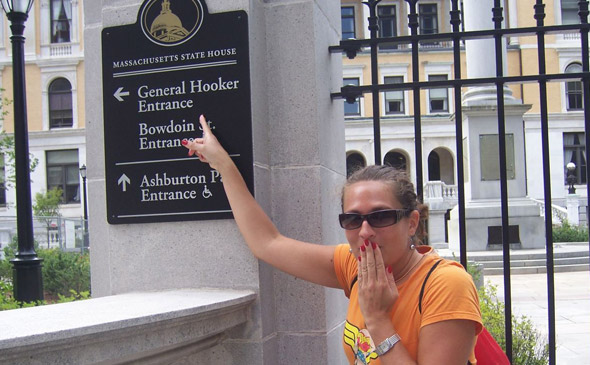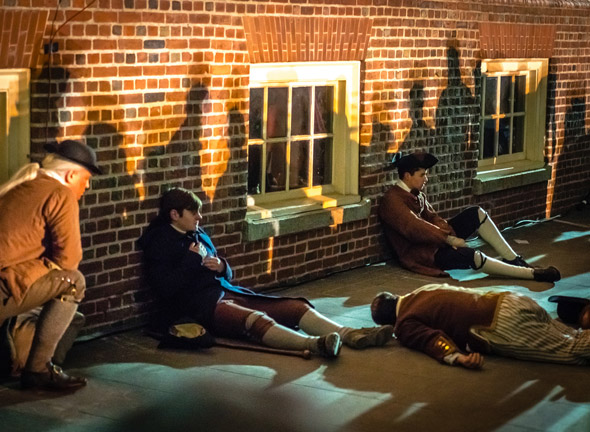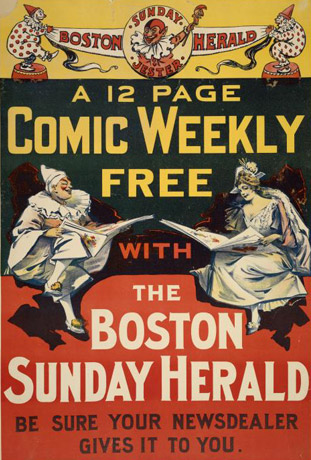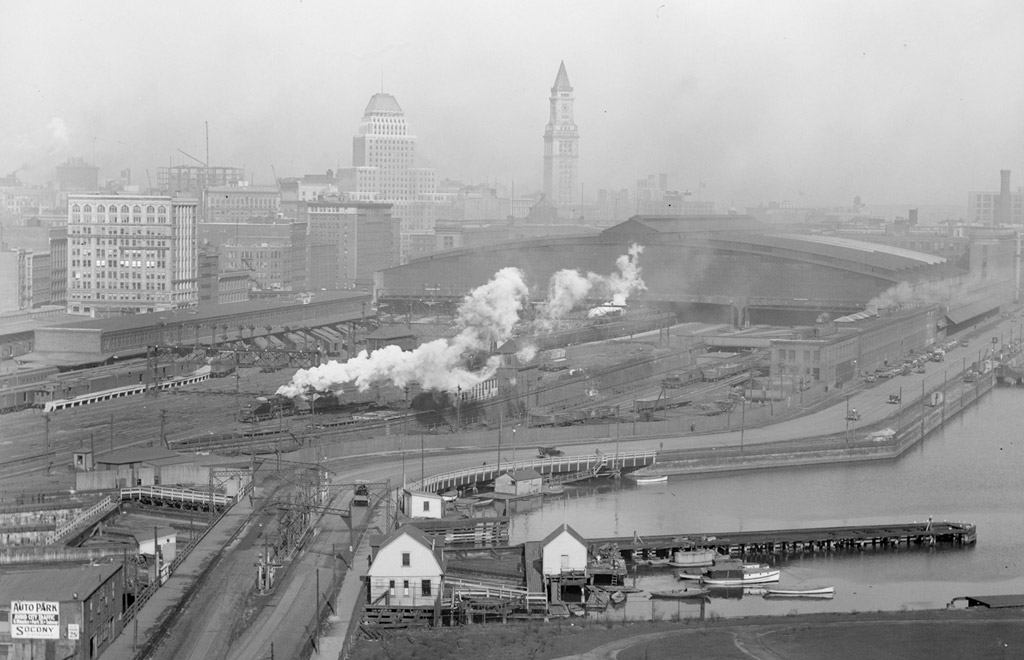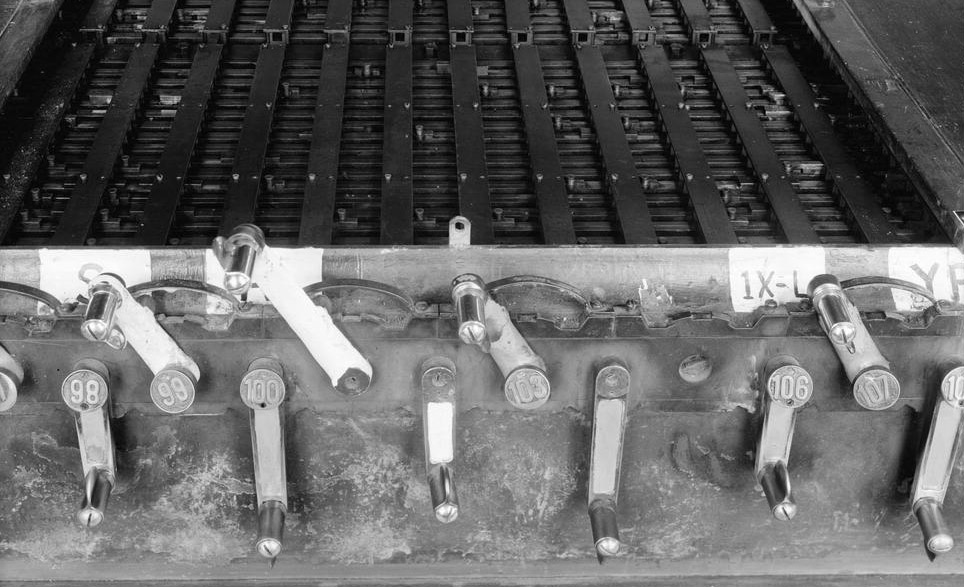Boston City Archaeologist Joe Bagley went back in time to show us what used to be where Fenway Park is now.
History
The folks at the Boston City Archives wonder if you can place this photo. See it larger.
Herald photographer Mark Garfinkel talks to Stanley Forman on the 40th anniversary of his photo of a black man attacked on City Hall Plaza during a busing protest.
Tourists just love the General Hooker entrance to the State House. Photo by BluEyedA73.
New England Folklore disabuses us of the legend that hookers are named for Fighting Joe Hooker, a Civil War general from Massachusetts. For one thing, the term was already in use by 1845.
When part of Beacon Hill was known as Mt. Whoredom.
Photo posted under this Creative Commons license.
People who cross the Neponset River between Dorchester and Milton on Granite Avenue traverse a bridge that looks like, and is, a relic of the days when the Neponset River was a working river.
The nation's first railroad, built in 1826, ferried granite blocks from a Quincy quarry to a wharf on the banks on Gulliver's Brook, which is just upstream of the bridge, and from which the builders of the Bunker Hill Monument got their granite blocks.
Schooner being loaded with blocks from the Quincy railway (the three-wheeled thing is one of the "cars"- from the BPL's photo collection):
The folks at the Boston City Archives wonder if you can figure out what's going on in this photo, and when.
Boston City Archaeologist Joseph Bagley has put together an animation that shows how Boylston Street in Copley Square has been built up over the millennia:
— Boston Archaeology (@BostonArchaeo) March 15, 2016
The folks at the Boston City Archives wonder if you can figure out exactly what these guys were doing, and when (hint: This was on a Saturday night) See it larger.
At the corner of Stuart Street and Tremont Street, in 2013 there was a Panera's Bread which could still be there today, 2016.
In the 1970s to the early 1980s, there was a barroom/strip joint which was part of the Combat Zone at Stuart and Tremont Street. It was a unique location in the Combat Zone as it was some 2 blocks away from the main area of what was called the Combat Zone. I am trying to recall the name of this the Combat Zone barroom.
Long time memory versus short time memory is funny as you get older. I can not recall all of what i did yesterday, but i have a video memory of what that Stuart/Tremont Street barroom in the 70s looked like inside like it was this morning i went in. There was also a barroom on the second floor but they did not advertise on the outside. But i can not recall the name of the business.
The Boston Business Journal remembers Ray Tomlinson, who gave us both e-mail and the use of the @ symbol in 1971, as an engineer for what was then Bolt, Beranek and Newman in Cambridge.
Matt Conti took in the Boston Massacre reenactment at the Old State House.
Copyright Matt Conti. Tagged as universalhub on Flickr.
The folks at the Boston City Archives wonder if you can place this photo. See it larger.
Long-time South Boston residents are fighting a city edict to shorten this year's St. Patrick's Day parade - and vowing they will remember the mayor's role come next election.
In 1978, though, the roles were reversed: Parade organizers wanted to shorten the route but City Hall wouldn't let them. Read more.
Turns out that only three of the four towns evacuated to make way for the Quabbin Reservoir are mostly submerged under the water. Roadtripnewengland recently visited the ex-town of Dana, which is still mostly above water.
Via Boston Reddit.
The New York Public Library has a collection of hundreds of posters that newspapers back in the 1890s would print up every week to try to entice readers. Among them: Posters for the Boston Sunday Herald - which went from the lowbrow (see the above poster larger) to the sophisticated: Read more.
The folks at the Boston City Archives wonder if you can place this photo. See it larger.
South Station and what little there was of the Boston skyline in 1930.
On New Year's Day, 1899, the first train steamed out of what was then called South Central Station at Atlantic Avenue and Summer Street. Built to replace the four other train terminals south of downtown, the station was physically one of the largest in the world - and for decades served more passengers than any other station in the US. It had 26 platforms, apartments for railroad workers, 45 bathrooms with automatically flushing toilets and a separate women's waiting room with lounge and rocking chairs and cribs.
News photographer Leslie Jones chronicled the station's life in the middle of the 20th century, when trains were the dominant mode of transportation and the station went from Atlantic Avenue to Dorchester Avenue along Fort Point Channel. Here are some of his photos. Read more.
Joshua Resnek ties together the story of Chelsea from Lincoln's speech in 1848 to the Chelsea of the 1960s, tied together by the building he spoke in - which stands to this day.
Some of the levers that used to control the switches at South Station. See it larger.
Thursday's South Station meltdown proved to be the fault of a computerized track-switching system in a building called Tower 1 (and seems Amtrak still is unsure what happened).
Today, Tower 1 is a shed, basically, but it once was an actual three-story tower in the middle of all the tracks funneling towards South Station. Installed in 1899, it handled the more than 700 trains that once came into and left what was once the busiest train station in the country, using hand-cranked levers to control pneumatic tubes that changed the
settings of switches in the station's large "interlocking," where trains could be guided from one set of tracks to another. Read more.


